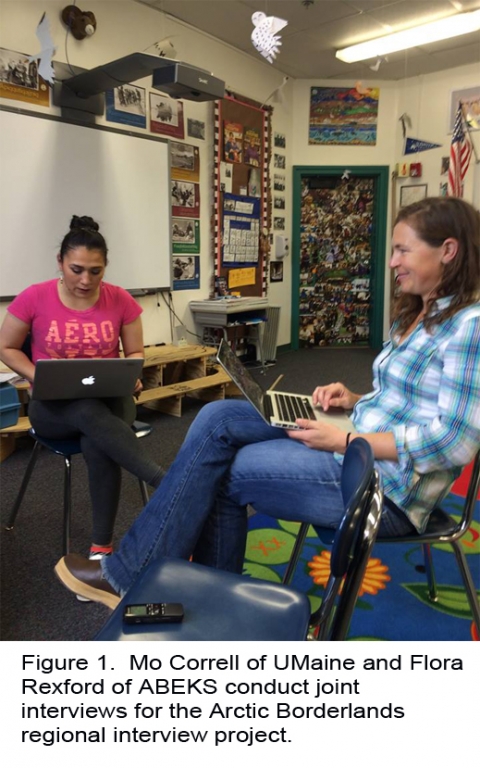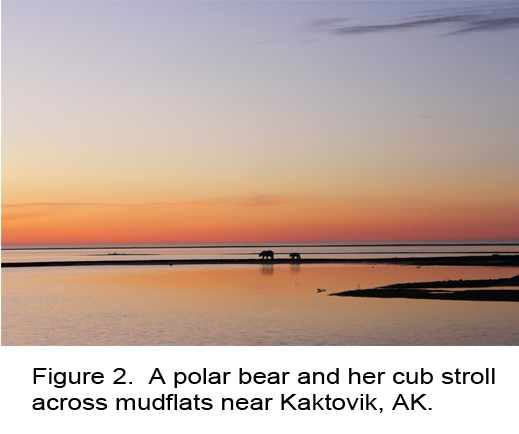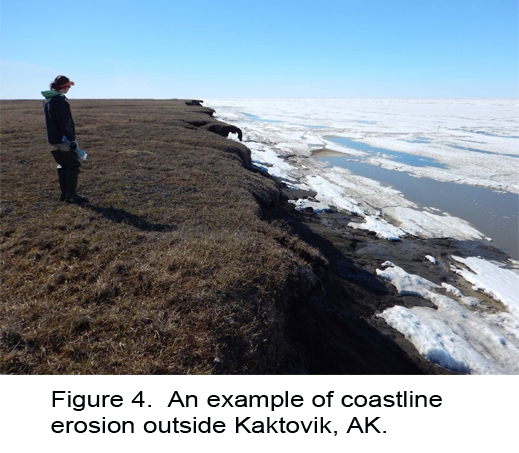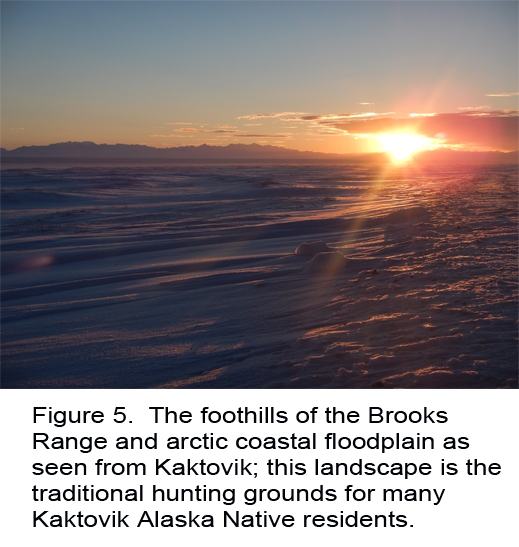Exploring Stakeholder Needs for Coastal Research in a Rapidly Changing Arctic
Exploring Stakeholder Needs for Coastal Research in a Rapidly Changing Arctic
Field Team Members: Mo Correll1,2, Philip Martin2, Flora Rexford3
1The University of Maine, 2The Arctic Landscape Conservation Cooperative, 3The Arctic Borderlands Ecological Knowledge Society
Field Location: Beaufort Sea coast, AK
Dates: May-September 2014
Funding Support: A2C2 NSF IGERT program, U.S. Fish and Wildlife Service, University of Maine Graduate Student Government
Summary
The northern coastline of Alaska and Canada has recently experienced abrupt physical change through the loss of summer sea ice in the arctic. The Arctic Landscape Conservation Cooperative (ALCC) was developed to organize and implement cross-agency and interdisciplinary programs to benefit conservation efforts within this area of interest with an emphasis on climate change and other landscape-scale stressors. As a fellow with the University of Maine’s Adaptation to Abrupt climate change NSF IGERT program, Mo Correll completed an internship with the ALCC to develop outreach mechanisms for a varied set of stakeholders affected by the abrupt loss of summer sea ice and associated coastal zone change. The internship included A) an assessment of coastal community interests in short- and long-term coastal change in and around Kaktovik, AK, B) a review of stated informational needs from ALCC area managers, and C) the development of a formalized interview effort with Alaska Native residents of Kaktovik, AK as part of the Arctic Borderlands Ecological Knowledge Society (ABEKS) regional interview effort to record Traditional Ecological Knowledge (TEK) about coastal change in the area.
Methods*
To identify needs and interests for all parties, we reviewed and compiled information previously published about topics of interest. We then interviewed representatives from all of the major management entities along the Beaufort coast, as well as representatives from the major community groups in Kaktovik, AK including tribal, city, and corporate entities. To complement this effort and to better understand coastal community interest in climate change predictions along the coast, we attempted a formal interview process with individual Kaktovik community members in conjunction with ABEKS.
During our informal interviews we spoke with representatives from the National Park Service (NPS), Bureau of Land Management (BLM), United States Fish and Wildlife Service (USFWS), Wildlife Conservation Society (WCS), Alaska Department of Natural Resources, Native Village of Kaktovik (NVK), Kaktovik Inupiat Corporation (KIC), and the City of Kaktovik. Generally, a discussion would start by asking a series of questions, and conversation would progress from there.
Secondly, we designed and partially implemented a formalized interview project in conjunction with ABEKS. These interviews began in late August and continued through November of 2014. ABEKS maintains a regional interview effort to collect Traditional Ecological Knowledge (TEK) across both arctic Alaska and Canada, a region designed to capture information about the Porcupine caribou herd that occupies this area and is traditionally harvested by subsistence hunters in the area. We developed several supplemental questions to collect information about climate change and perceptions of landscape change. All interview questions were approved by the Institutional Review Board (IRB) through the University of Maine prior to implementation in the formalized interview process.
Findings*
Of all the physical coastal science topics we reviewed, further study and mapping of sea ice extent along with storm waves and trends were the primary concern. Rated close behind was the mapping, modeling and forecasting of coastal erosion. Additionally, there was a strong stated need for long-term baseline data in physical properties of the coast. Specifically, increasing the number of long-term tidal stations and permafrost records came up repeatedly in conversations with stakeholders and should be featured in baseline data collection efforts in the future.
The top rated topics in the biological sciences were the development of population trends for specific species. The top species group needing additional research was “subsistence species” followed closely shorebirds, waterfowl, and marine invertebrates. There was also a general call for baseline information about keystone, subsistence, and prey species. Also of heightened concern were the effects of environmental change on wildlife habitat use patterns, specifically change in migration corridors or concentrations within the species’ defined ranges. This topic is one in which community resident and area manager opinion diverged; Kaktovik residents were less interested in vegetation and wildlife prediction and change, since those interviewed were generally confident in their ability to predict and adapt to changing plant and animal distributions.
In short, we found the following general conclusions about coastal research needs:
1) Costal stakeholders have largely convergent needs and interests in coastal change research
2) Precise, accurate models are more important to stakeholders than those with large extents through space and time
3) There are thresholds in scale beyond which change predictions are not useful
4) Elevation change is important to predict
5) Outreach to coastal communities must include both digital- and map-based products
From the feedback discussed here, we recommended the development of several small-scale, local models around Barter Island and other coastal communities on erosion rates, sea ice coverage, sea-level rise, near-shore water currents, and barrier island movement, and the incorporation of these predictions into a beta version for an online visualization tool. As a general note, we recommended strong follow-up efforts with any and all future contact with community organizations. Communication with these organizations should continue through data collection and analysis, as well as after project completion. It is imperative that preliminary study findings be reported to the community through a mechanism appropriate to that specific community, and feedback sought on how to improve the conclusions drawn from the study. Many Kaktovik residents voiced a severe lack of communication between researchers and village residents, and this must change in order to build and maintain fruitful relationships, specifically within Alaska Native coastal communities.
For more information about the A2C2 IGERT program, visit our website at http://a2c2igert.umaine.edu. For information on the ALCC and their regional projects and goals, see their website www.arcticlcc.org. The ABEKS regional interview effort also has a full project website: www.arctic borderlands.org
*Includes direct excerpts from the final Needs Assessment report for the ALCC.






